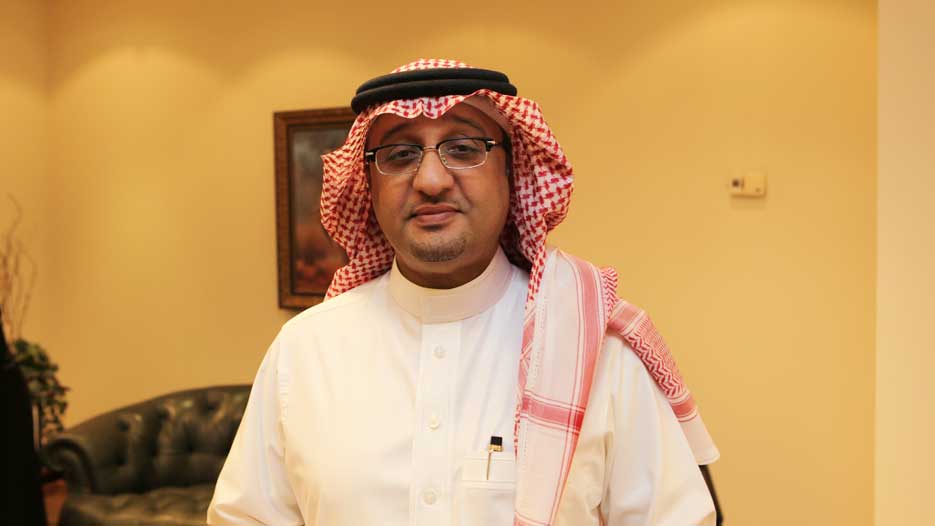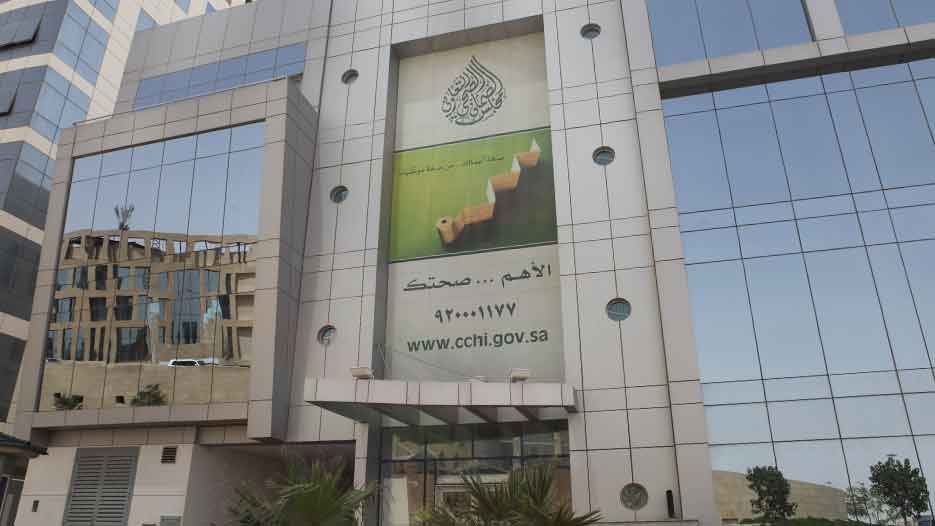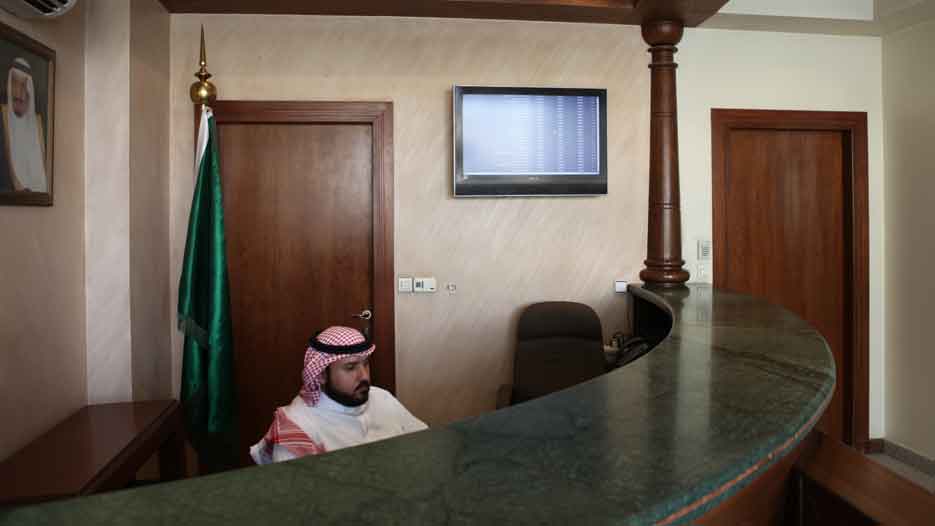Health Insurance Services in Saudi Arabia: Regulatory Viewpoint
The outlook in health insurance industry is that it’s expanding. There was a study in 2012 that found the demand in health services and health insurance services in Saudi Arabia would expand 100% in 2019, which is a huge figure that requires a lot of efforts and changes to CCHI, and overall quality of health insurance companies and providers.
Interview with Mohammed S. Al-Hussain, Secretary General of Council of Cooperative Health Insurance

What are your main priorities for the 2015-2016 reforms in the insurance sector?
The Saudi Arabian economy is expanding in high percentages, due to mega infrastructure projects , economic changes and private mega projects, and CCHI – as a regulator of the health insurance industry – we follow the same expansion model. We are trying to be within that percentage of growth. We do have some concerns over the next 2-3 years, regarding expansion, improving quality of health providers who are under the umbrella of CCHI, adding segments to the markets, and utilizing IT.
What are the future measures that you will introduce to grow and regulate the sector?
We are moving ahead with adding new segments to the market, under the CCHI umbrella, we cover 9.8 million of the population, both Saudis and non-Saudis. When we add a new segment, our main challenges are increasing capacity and quality and accessibility. We faced a lot of challenges through these experiences, but have learned from a lot of difficult experiences, especially about manpower, so the lessons learned in overcoming these challenges will help us solve problems and grow in the sector.
How does the insurance sector in Saudi Arabia compare to neighboring countries? What is the depth and sophistication of the sector?
Saudi Arabia is a vast country with a big population when compared to our neighbors in the Gulf region. CCHI covers about 10 million people – almost 140 different nationalities that are scattered throughout the country – and this distribution throughout the country requires health services, quality services, and accessibility, which make it quite challenging.
The sector is somewhat over-saturated with many companies offering health insurance. There are over 30 licensed companies to provide insurance and 66 businesses that offer insurance support services. In light of all this, what is the industry outlook in your opinion?
The outlook in health insurance industry is that it’s expanding. There was a study in 2012 that found the demand in health services and health insurance services in Saudi Arabia would expand 100% in 2019, which is a huge figure that requires a lot of efforts and changes to CCHI, and overall quality of health insurance companies and providers. We have to implement a lot of changes, and assist the market in adapting to these changes, in order to maintain or improve quality to the population that we are covering now.

Are you fully satisfied with the growth of the sector?
Fully satisfied? No, but happy? Yes. I think we have done a good job with the segments that we are covering now, and had a smooth transfer in 2006-2009 when we transformed from health services that were provided by the Ministry of Health. Now, we have a big population that is covered by CCHI. I believe that we have done a good job, but there are more efforts that we need to do; with the new segments, we are expecting 7-8 million people will be added over the next two years.
The health care sector is one of the fastest-growing sectors in the Kingdom. What is the relationship between CCHI, and the healthcare providers and insurance companies in the private sector?
We look at the providers as strategic partners. The two components in the health insurance sector are the health insurance companies and health providers, so we think of them both as strategic partners. We try to collaborate with them to solve problems in quality and capacity. Our board has two members from that sector, who keep us updated with the needs of the market, and how to regulate and satisfy those needs.
What are the direct and indirect effects that CCHI has had on Saudi Arabia? What was your impact on the insurance sector, population, and socio-economic development?
CCHI covers Health insurance which is about 53% of total premiums in the insurance sector; health insurance now comprises over half of all insurance in Saudi Arabia. We now take care of 2,740 health providers, which is a 240% increase from when we started in 2006. We did a rethinking of how the entire population in Saudi Arabia uses health insurance by moving from the conventional health providing services to privatized health insurance, which gave us a good indication that people are interested in changes and better quality of services. An optional health insurance choice garnered an additional 400,000 people.
What is the Kingdom’s strategy and vision for health insurance? Especially the fact that health insurance hasn’t been something common in this market, and is a recent development when compared to Europe and the United States where it has a 200-year history. What was the original idea that Saudi Arabia is trying to implement? Where did the idea stem from in order to provide health insurance?
Health insurance, as an idea, started about 25 years ago because of the demand from the population (if you look at the budget, it has grown and expanded in two-digits periodically). The Ministry of Health offered free health services for Saudis and non-Saudis, and the labor law required sponsors in the private sector were responsible for employees. This pressured private companies and government officials to start looking for another scheme; there were a lot of studies done about private health insurance, which we are now regulating. This scheme is doing well and we have moved 10 million people to the program, as I mentioned earlier. It also shows that the Ministry of Health can do their job efficiently, and that we’re adapting service quality and changing the options in our health insurance coverage.

The idea was to reduce the pressure on that budget?
Not so much, because Saudi Arabia has no problem in spending or expenditures. The problem is that the demand cannot meet supply or what is [already being] offered – even if you spend 1 million or 10 million, you will not be able to cover that. There has to be another financial tool or motivation to privatize hospitals, the health sector, and health providers. This has relieved the Ministry of Health a little, and you can see that it has grown over the last 10 years after moving 10 million people to private companies and health providers.
Is the strategy to also provide insurance for Saudis?
Yes, we are thinking [about this] and looking at different models as to how to give Saudis health services regardless [of the technique]. We’re trying to find the best, most accessible, and most sustainable way for this – but health services is difficult, and we are still trying to find a satisfactory model to propose to the Saudis. So, we are thinking, but don’t have anything finalized yet, but I think that within 2-3 years there will be changes.
What are the main challenges that you are facing?
The main challenges in the health insurance regulatory body is to keep maintaining and governing that market, capacity, good training and manpower, and quality. These are the main challenges, and after 14 years ,CCHI have learned a lot of lessons and gained from our experiences that make future challenges easier to solve.
What is your vision for the company? How would you like to transform it into a new institution? Your new headquarters is a new start, but how else would you like to transform the company under your leadership?
We are transferring the CCHI concept to an e-environment. All of our deals and documentations will be web-enabled. That is the main change you will see. We are adapting a model of change, strategy, policy, and structure of CCHI to cope and expand within that [online] market. One of the big tools of this organization is moving ahead to an e-environment.
You mentioned before the interview that Saudis have asked you what you are doing for them?
Saudis asked us why we were hidden – for six years we were working under the table and not visible in the market. We did that because you can’t say health insurance is good, or attractive while you’re not doing that with the Saudis. They asked me about this, ‘You care about the expats, but you don’t care about us.’ People are suffering because the Ministry of Health cannot cope with the demand. For example, the scheme looks attractive for those want to have an operation; so the Saudis asked why we didn’t apply this to them. Why can’t my insurance card be more accessible and allow me to go to any hospital or clinic around the Kingdom if I’m a Saudi? If you don’t have insurance, then you don’t have accessibility. We can’t say no to providing health insurance, but we can’t also shift Saudis to different health insurance companies. At the end of the day, the company will either approve them or not approve them (if they see your premium is a loss), but this will never be acceptable to the Saudis.
For non-Saudis, we cover them to 500,000 Saudi riyals. We are trying to find the best option for non-Saudis. By law, since the 1960s, companies with more than 10 employees must have coverage; because there wasn’t much regulation during that time, companies would bring their employees to the Ministry of Health to be covered for free. As the population and demand grew, that principle could not continue. The Saudis who are working in the private sector are covered. Now, CCHI is covering 2.4 million Saudis – both employees and their families. When we looked at the figures last month, we found that 2.6 million people from covered segments were not covered. We are working with these people now, and in one year, there will be 5 million Saudis covered under the private health insurance. We also cover 7 million foreigners now, totaling 12 million people, and the Ministry of Health covers the rest of the population. There are two million household workers are not covered by us yet, due to capacity constraints, but we are expecting to gradually impose the health insurance scheme to them over the next year.
Within the next 2-3 years, we’ll add 6-7 million people (Saudis under covered segments who are not yet covered, households, and visitors) to the CCHI umbrella. If you visit Saudi Arabia, the Ministry of Foreign Affairs requires you to have compulsory health insurance, and those figures come to about 1.5 million visitors per year. The visa application has four steps, where the second step requires you to have insurance and the coverage is minimal.
When you traveled around Europe, which country’s system do you think would be appropriate for Saudi Arabia in the future?
France is good. The good thing about France is that the whole population spectrum is happy and satisfied with their scheme, except the government. Because of the expenses are huge. In 2012, the government covered the deficit with €12 billion. The most satisfied countries are France, Germany, Canada, and Japan, but the problem that they all face is that the expenses are really high and more than they receive from the government. The overall expenses, manpower, and medical equipment are becoming more and more expensive. People are getting older, and facing more problems – especially in getting coverage from insurance companies. In Saudi Arabia, our health insurance is compulsory for every person, but people over the age of 60 who want their own optional health insurance will have a harder time in being covered because the price would become inflated.
However, in 10 years we will face difficulties because the life expectancy is going up and everyone who was young will be older. Ultimately, it comes down to how much society will spend on people lives – how much does a human life cost. And, it’s a lot. The United States spends 15% of their GDP on health insurance and their satisfaction is very low, while France spends 6% of their GDP and their rank is 2 or 3. It’s the way you invest and impose your efforts, not how much money you inject, which is the best scheme for this environment. In 2011, the United States had 50 million people that were not insured – even though the government spent 15% of their GDP. The average is usually 7-8%, which is already high, and for Saudi Arabia is 3.5%.
The satisfaction in Saudi Arabia is not happy. Whatever you do, people expect more. When you upgrade, your demand and expectations become higher; especially with the younger generation, their expectations are very high. We also have big hospitals, but cannot cope with the demand, so money is being spent on underutilized hospitals. Once we solve the redistribution and accessibility issues with a good scheme, then we people will be more satisfied.